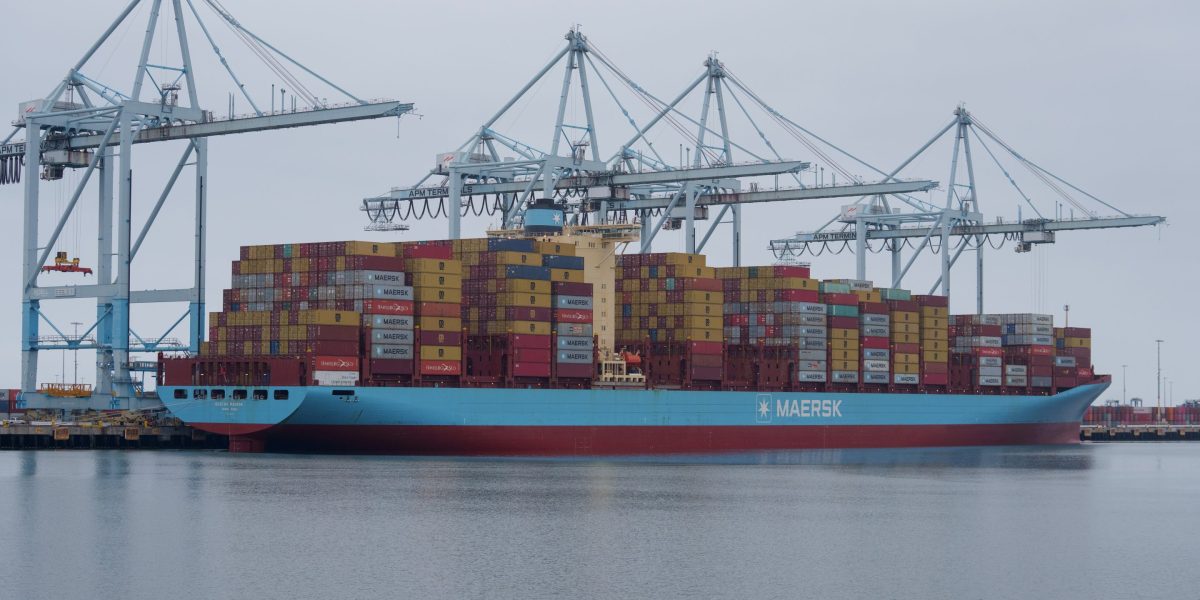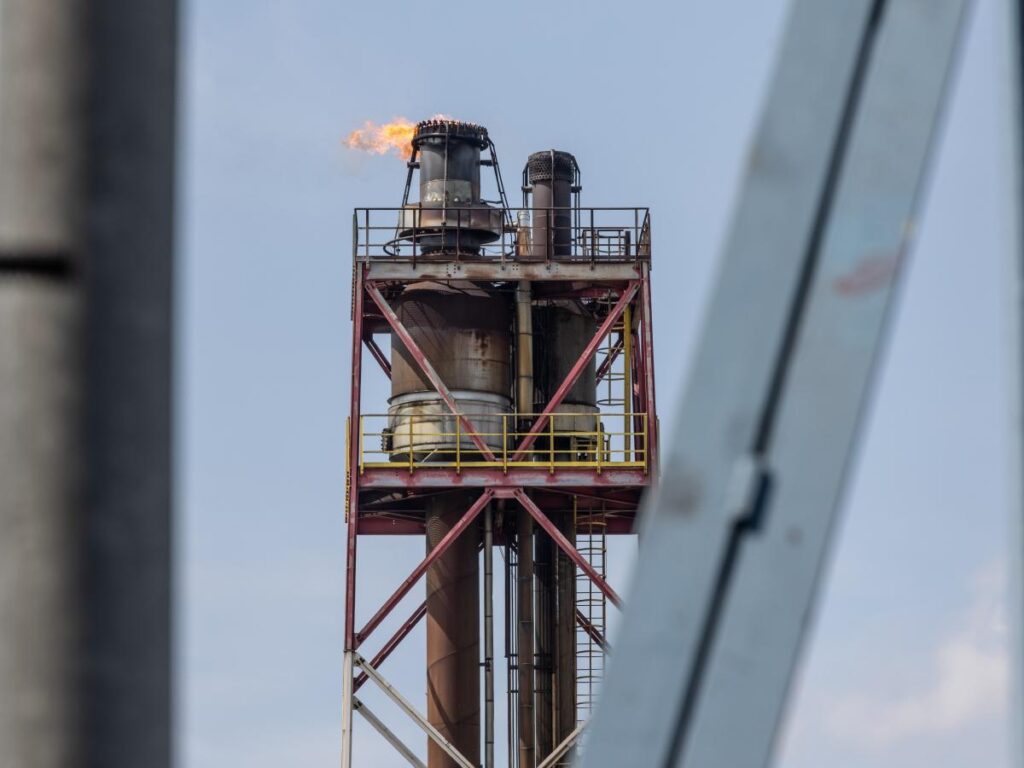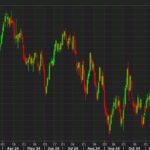

The busiest port complex in the US is churning through import volumes near the highs set during the pandemic despite worries about a cooling economy.
The ports of Los Angeles and Long Beach, which account for roughly a third of all US container imports, had their third-strongest month ever in July, just shy of an all-time high reached in May 2021. Back then, a wave of inbound consumer goods caused supply bottlenecks on land and a queue of cargo ships waiting for a berth offshore was getting longer by the day.
Demand now is driven by retailers and other importers that are stocking up ahead of US tariffs on Chinese goods and a possible strike by a large group of American dockworkers — adding to the usual frenzy of pre-holiday ordering that occurs this time of year.
The marine terminals in Southern California’s San Pedro Bay are withstanding the crush so far, though some gauges of capacity constraints are starting to rise.
“We’re in a strong position heading into the peak shipping season as consumers purchase back-to-school supplies and shippers move goods ahead of potential tariff increases,” Port of Long Beach CEO Mario Cordero said in a statement. “We have plenty of capacity across our terminals and cargo continues to move efficiently and sustainably.”
In the latest rush to restock, fear of delayed shipments is a big factor.
Talks between the union representing longshoremen on the East and Gulf coasts and their employers have reached an impasse, six weeks before their contract expires Sept. 30. So some ocean freight that might come through ports from Boston to Houston is shifting to West Coast gateways until that uncertainty is resolved.
According to data from Sea-Intelligence, a Copenhagen-based maritime data and advisory firm, every one day of a strike would take about five days for ports to clear the resulting cargo backlog. A one-week strike starting Oct. 1, for instance, would take until mid-November to work through.
“If we get a two-week strike, then realistically, the ports would not be back to normal operations until we are into 2025,” Sea-Intelligence CEO Alan Murphy said in a research note released last week.
Companies are also racing to beat the imposition of more tariffs on Chinese goods and, in the event Donald Trump returns to the presidency next year, he fulfills a campaign pledge to step up the trade war with China and raise tariffs on all US imports.
According to data released this month by the National Retail Federation and Hackett Associates, US container imports through major ports this year will reach 24.9 million measured in 20-foot equivalent units, up 12% from last year and close to 2021 and 2022 levels that topped 25 million.
LA-Long Beach and other West Coast ports have been losing market share to their eastern rivals for years. Hackett Associates Founder Ben Hackett said fresh worries about labor disruptions at eastern ports has pushed the West Coast’s share of cargo “above 50% for the first time in over three years.”
Such factors are distorting the demand picture, making it hard to know whether peak shipping season started early and trade volumes will level off soon, or if importers will continue bringing in more than usual.
There’s also the chance that consumers’ ability to continue spending bottoms out, leaving warehouses full and companies with too much inventory.
The latest retail sales report reflects consumer resilience despite higher borrowing costs, a cooling labor market, and an economic outlook clouded by wars and the US presidential election in November.
But with pandemic savings now largely gone and wage growth cooling, many Americans are increasingly resorting to credit cards and other loans to support their purchases.
Cautious Consumers
Walmart Inc.’s latest earnings report underscores how US households are becoming more cost-conscious in light of economic uncertainty and high interest rates. Americans are also pulling back on travel, while deferring big home renovations.
“We are seeing that the consumer continues to be discerning, choiceful, value-seeking” and focusing on essentials, Chief Financial Officer John David Rainey said in an interview Thursday.
Home Depot Inc. and Whirlpool Corp. cut their sales forecasts for the year as their shoppers held back spending on big-ticket items and home improvement projects.
So far, though, a consumption slowdown isn’t visible in the industry that moves 80% of global merchandise trade. Asked whether he sees a recession on the horizon, the chief executive of the world’s No. 5 container carrier said not according to his bookings.
“All of us were surprised by the strong demand that we’ve seen since the first of May,” Rolf Habben Jansen, CEO of the German container carrier Hapag-Lloyd AG, said in an interview with Bloomberg Television last week. “That’s actually still continuing well into the third quarter.”
At the Port of LA, preliminary August figures show sustained momentum. Executive Director Gene Seroka said nearly all indicators of port efficiency are at or better than they were when the surge started, though “recently we’re seeing some micro issues.”
Dwell time for containers — a measure of how smoothly they’re moving through the port — has moved up, reaching more than six days. “That’s far too high, it needs to be between two and four days,” Seroka said.
Strains are also starting to appear in truck chassis availability — an issue blamed for the severe delays at LA-Long Beach during the Covid bottlenecks of 2021 and 2022.
Still, he doesn’t see anything that’s a cause for alarm. “We’ve been clipping out the last three months at really high productivity” Seroka said.
He said some industry observers believe that US imports may have peaked in July, a hypothesis that matches up with a recent decline in spot shipping rates.
“We’ll see if that holds true,” Seroka said. “So much of it depends on the economy.”















